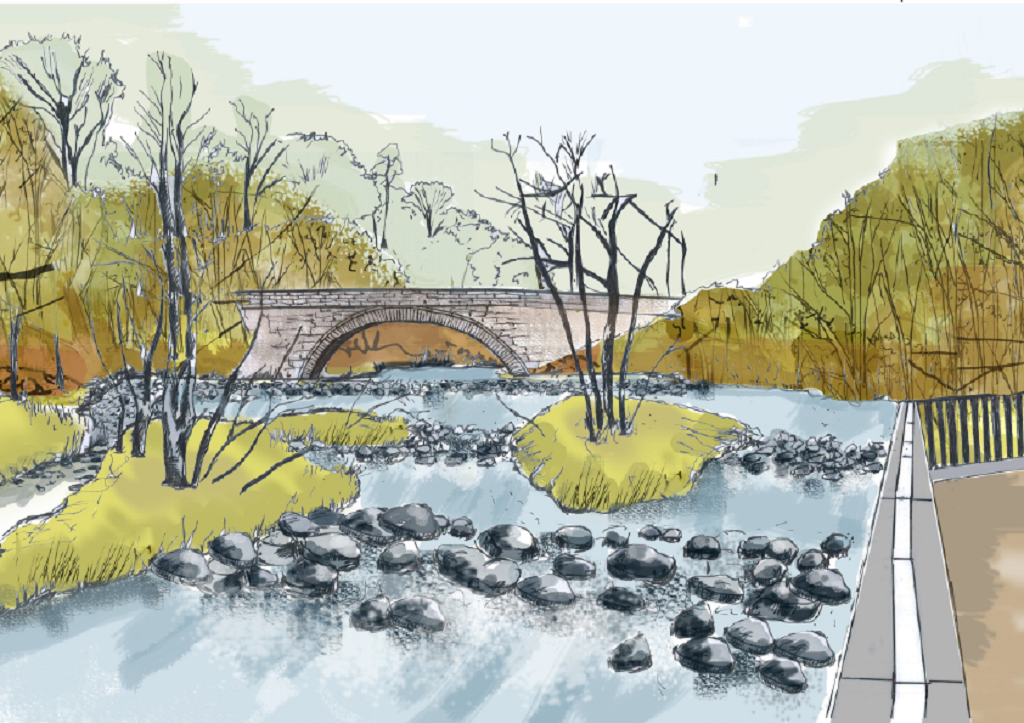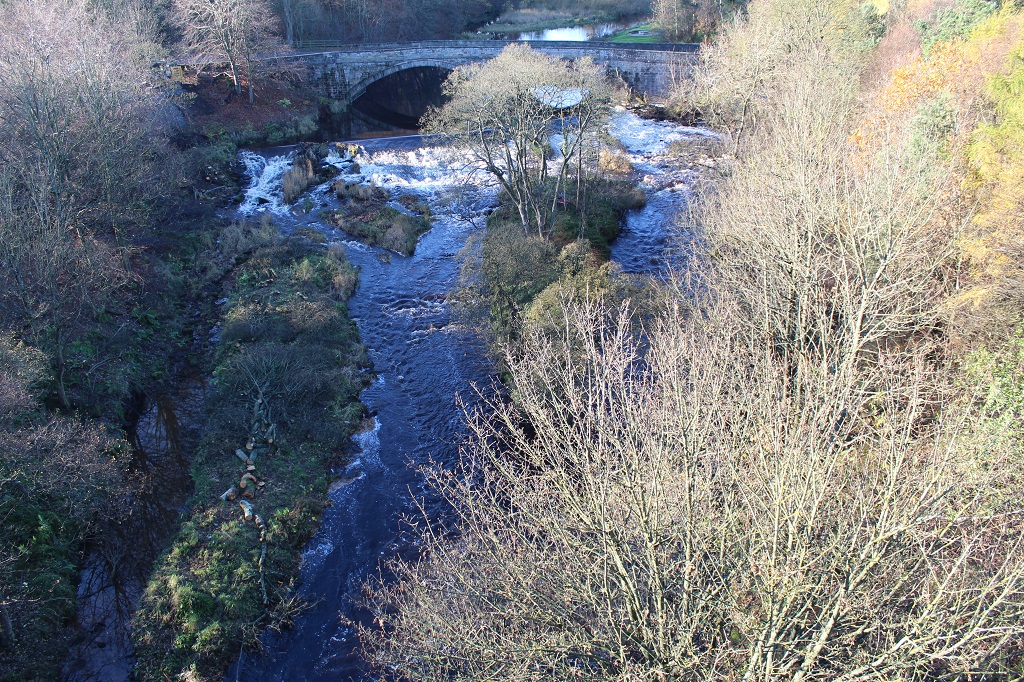The UK’s longest rock ramp construction is set to return salmon and other fish species to a Scottish river for the first time in over 200 years.
In the first project of its kind in Scotland, RiverLife has begun to transform the River Avon and the River Almond in West Lothian through a mixture of large scale capital projects and smaller scale works.
The Scottish Government supported capital projects include; a fish passage at Fair-A-Far (completed in April this year), a fish pass at Kirkton Weir, a rock ramp at Howden Bridge and a fish bypass at Livingston Rugby Club where works begins this week.
These projects will allow fish including salmon, sea trout, brown trout and lamprey to return to the spawning grounds in the upper reaches of the these rivers for the first time in over 200 years.
At Howden Bridge the weir was originally built to power the New Calder Paper Mill which produced wrapping paper from the 1800s.
Over the next three months a ramp will be built between existing islands across the face of the weir to form a waterfall-like structure made up of pools, runs and easy leaps to help fish over the weir. This easing solution will help preserve this piece of industrial heritage and when completed it will be the largest rock ramp in the UK.
In addition to a programme of smaller scale works and community engagement has already had a huge impact in conservation of the rivers and widening access to the public. Tree planting, river bank restoration and riverside furniture repair work has been delivered by a mixture of professional contractors and enthusiastic volunteers.
Activities delivered by the RiverLife team have included guided walks, invasive species identification and documentation and the popular primary school education programme Fish in the Classroom.
RiverLife: Almond & Avon is a partnership project between the Forth Rivers Trust (formerly the River Forth Fisheries Trust), West Lothian Council and City of Edinburgh Council, funded by The National Lottery through the Heritage Lottery Fund, SEPA Water Environment Fund and the The Scottish Government.

An artist’s impression of the finished Howden Bridge area
The RiverLife project will run until 2020, promising action packed volunteer days, community lead action for our rivers, education days with Fish in the Class, and opportunities for the public to see the benefits to our river systems.
Director Alison Baker said: ‘As the RiverLife project crossed its mid-point in 2018 the arrival of diggers to create new access for fish at Howden Bridge and Rugby Club weirs on the River Almond was very exciting. The project working with local communities and the council continues to raise the profile of our fabulous rivers in the central area of Scotland through improving their habitat and physical condition.
‘This supports a wide variety of wildlife; otters, kingfishers, invertebrates and fish. The work in Livingston this year – together with work to four additional weirs over the next two years – will allow fish to access areas of the river currently inaccessible to spawn and therefore will allow the populations to become sustainable.
‘This is a fantastic achievement which the Trust and its partners has been working on for 10 years.’
West Lothian’s executive councillor for the environment Tom Conn said: ‘We are delighted to support the RiverLife: Almond and Avon project.

Howden Bridge weir before construction began
‘Our rivers are a fantastic natural resource for both nature and amenity, and this investment will help preserve and enhance them for future generations.’
Francis Hayes at SEPA’s Water Environment Fund said: ‘Every day SEPA works to protect and enhance Scotland’s environment, helping communities and businesses thrive within the resources of our planet. We call this One Planet Prosperity. Working with our partners in RiverLife, and with the Scottish Government, to re-open the Almond to natural fish migration forms one part of this work.
‘By easing barriers to fish like Howden Bridge Weir the project not only re-opens river habitat which has been blocked to fish for many decades, but also helps to improve valuable fish stocks, local angling opportunities and enhances other river wildlife such as otters and heron.’
Lucy Casot, head of the Heritage Lottery Fund in Scotland, said: ‘Thanks to players of The National Lottery, these rivers are providing powerful and memorable experiences making outdoor learning fun and equipping those taking part with skills which will carry them forward. Importantly, they are also sparking a passion for looking after our environment, a passion which is vital if our natural heritage is to be passed on in good order to future generations.’
TAGS

